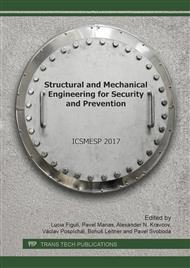p.1
p.8
p.18
p.31
p.38
p.44
p.52
p.62
p.65
Effect of the Particle Size of Wood Dust on Ignition Temperature
Abstract:
The development of the new technologies has also brought new possibilities of the wood processing, wood shaping and wood materials tending. By reason of increased human need for wood products the industry has shifted from the production in the workshops throught manufactures up to fabrications. This fact also causes increasing of the wood dust amount in the spaces of the production shops or halls, and by that also increased danger of the explosion of the wood dust. At the adequate initiatory source, sufficient amount of flammable material, oxidant and essential pressure, the explosion can occur and last for several miliseconds, therefore people rescue in the endangered spaces in case of explosion is impossible. One of the parameters which influence properties of the flammable wood dust is its particle size. The article deals with the particle size influence of the wood dust at its minimal temperature of ignition in the stired state. On the basis of the experimental measures the influence of the minimal action of the thermal energy for the activation of the ignition process of the wood dust in the stired state at the reacting of pressure and variousness of grit size is assessed.
Info:
Periodical:
Pages:
38-43
Citation:
Online since:
September 2017
Authors:
Price:
Сopyright:
© 2017 Trans Tech Publications Ltd. All Rights Reserved
Share:
Citation:


